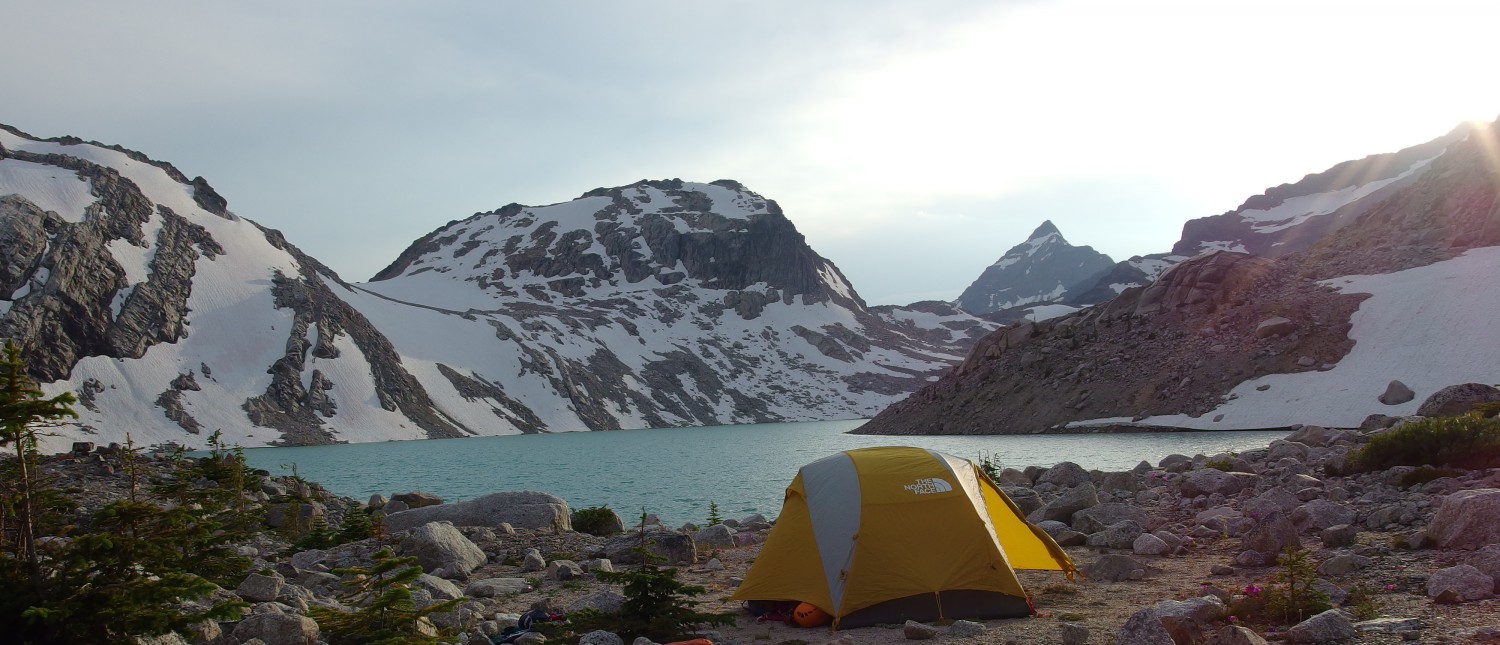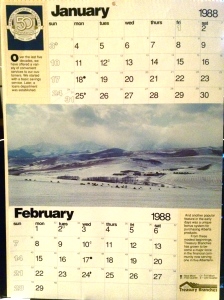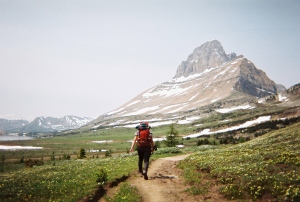In December of 2012, I was travelling home to Alberta from Montreal for my Christmas break. My fiancé, his sister, my mother-in-law to be, and myself (all born and bred Albertans) were walking through the arrivals floor of the Calgary airport when I stumbled upon a familiar view looming over the Hertz rent-a-car desk. “That’s my farm!” I said to my travelling companions.
This is the image I saw – blown up and backlit in a light box. No caption, no title but I knew exactly what and where it was. This day was the first time I had met my now Mother-in-law, and in that moment of us huddled around the photograph in a busy airport, like a small child I pointed at it – look, this is where I come from.
My moment of homecoming was doubly significant. I was in Alberta, so I was technically home, but I was also confronted with, for me, a symbolic and real representation of home. Although I never lived on the farm in the picture, many of my earliest memories of my family and home are tied to this place.
I remember the feeling of driving down the long, dirt laneway, the way the barn smelled as I watched the silhouette of my grand-father care for his horse, the excitement of holding little yellow chicks as they chirp under a heating lamp, and watching my grandmother make loaves of bread by the sun beaming through the kitchen window. This is possibly the best day-care a kid could have.
The farm is located south of Longview, Alberta on the 22 highway, now affectionately know as the ‘Cowboy Trail,’ which is reminiscent of the days of ranching and cattle driving through this foothills corridor in the not-so distant past. My Grandfather has recounted many stories of his own work in the area as a small boy and later as a man on his own ranch before the road was built.

The ranch came into to my family when my great-great grandmother immigrated with four of her children to southern Alberta, her eldest son having arrived in 1893 to secure the land for the family. The Fitzherbert family gardened, hayed, ranched, and kept the farm until 1991 when my grandparents retired and moved into town (High River). This same year my parents moved us off the farm we lived on, a farm previously owned by my great-grandparents. These moves greatly affected my sense of home and still do to this day. When I feel homesick, I imagine these places and the way they felt, smelled, and how the landscape they are a part of remains my symbol of home.
This photograph in the airport is not the only image of the farm that my family has come across over the years. It seems that our farm has become a symbol of Alberta or of Southern Alberta farming and ranching more specifically. Hanging in my grandmother’s doublewide trailer is a framed print of the farm featuring the logo of the Alberta Treasury Branch which my mother was given while working for Alberta Treasury Branch in Black Diamond, Alberta. The print was hanging on the wall of the bank and when she expressed that the farm in the image was where she was raised, they took the picture off the wall and gave it to her.
The image was also featured in the Alberta Treasury Branch’s 1988, fiftieth anniversary calendar.
Gracing the page of the months of January and February is the farm. Illuminated by winter sunbeams peaking through the clouds, covered in a blanket snow, the farm buildings are clustered amongst the rolling hills that join the snow-capped Rockies in the distance.
Most recently, I came across a photograph of the farm on the Travel Alberta website.
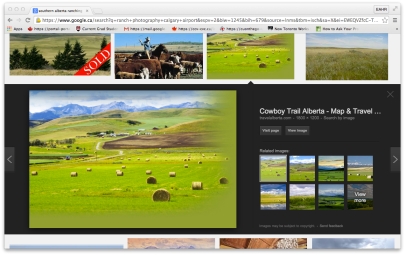
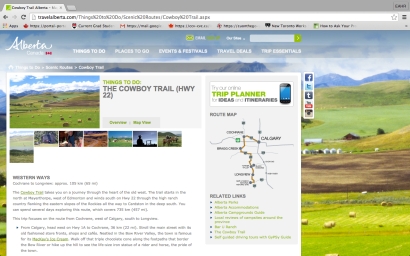
For my family, the photographs of the family farm represent a sense of place and belonging but for the corporations, banks, tourist agencies, and government bodies, our farm is somehow quintessentially Albertan.
In my genealogical and archival research, I have attempted to find traces of my family history but unlike the well-known Southern Alberta ranchers and businessmen, my family is not well documented. Despite the popularity of historic sites like the Bar U or EP ranch, it is views of my publicly unacknowledged ranch that persist as one of Alberta’s ‘iconic’ places.
In “Finding the View: Landscape, Place, and Colour slide Photography in Southern Alberta,” James Opp states, “the multiple inscriptions of memory, although not always visible in the frame, are the sinews that link the pictured place to the picture itself.”1
The many images of the farm cannot avoid the indexes of time (if one looks closely at the changing farm equipment over the years, new farm buildings, etc.) But by the nature of how the photographs are used, they are made and used to illustrate a quintessential place and time in Alberta, a place that for many families now only exists as a memory. Through my own layered inscriptions of memory and those of my family onto the photographs, they are linked to the place – the farm. Now, these links between the images and the physical space is what links my family together.
The farm, which is the place of many beginnings and endings for my family has been commodified and co-opted. I resent the use of images of the farm as an iconic Albertan symbol because I attempt to maintain authority over something that is no longer mine but will always be the image of home in my imagination. On the other hand, I feel proud to run into these reminders of where I came from and how hard my family worked so I could be so far away, dreaming about home.
[1] Opp, James. “Finding the View: Landscape, Place, and Colour Slide Photography in Southern Alberta,” in Placing Memory and Remembering Place in Canada. Vancouver: University of British Columbia Press, 2010.
